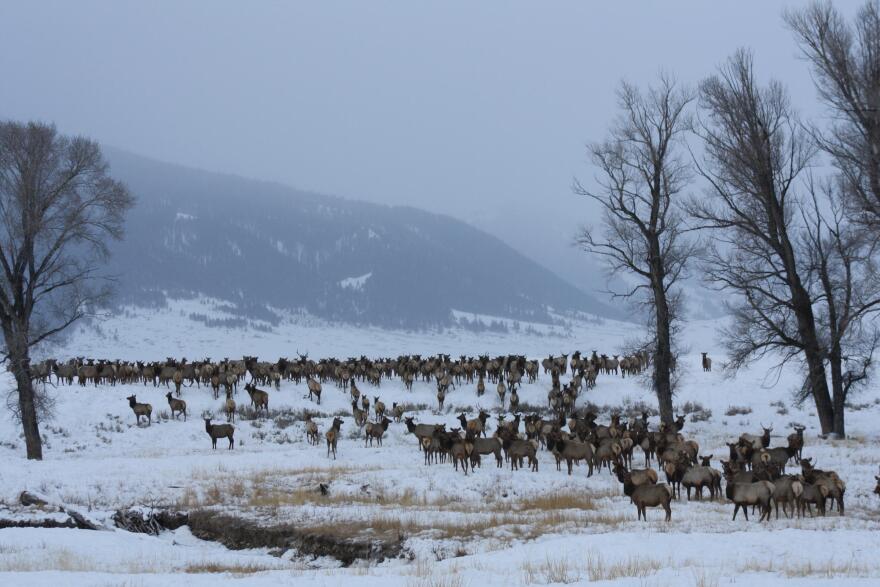A U.S. District of Wyoming Court ruled on Tuesday that the U.S. Forest Service (USFS) improperly permitted two of the three feed grounds that were reviewed because they conducted improper environmental analyses. The court's main concern was the possible threat that feed grounds pose to elk since the high congregation of animals can lead to rapid disease spread, with Chronic Wasting Disease being a primary concern.
"Chronic Wasting Disease is for sure the most urgent immediate threat. But there are also other wildlife diseases that are also spread on the feed grounds," said Connie Wilbert, director of Sierra Club Wyoming, one of four organizations that brought the suit. "There is a disease called hoof rot, which elk get when they stand around in their poop and urine all day long, which they do on feed grounds. Feed grounds are ready transmission areas for brucellosis, which is a disease that elk got from cattle. There's scabies. There's all sorts of diseases that are worse when you feed elk."
Despite the USFS arguing that their permits were still valid under a continuing use clause, the court determined that there wasn't a proper environmental analysis done at the Alkali Creek feed ground in the Gros Ventre drainage or the Dell Creek feed ground in Sublette County before those permits were issued. They ruled that a new analysis must be completed at those two feed grounds before new permits can be issued.
According to Wilbert, a new, proper analysis will include the threat of disease spread and new permits won't be able to be issued.
But the court ruled that the special use permit for the Forest Park feed ground in Lincoln County was valid, despite the groups' arguments otherwise.
"They have said that they intend to do NEPA analysis on that feed ground one of these days and we will be urging them to do it sooner rather than later because we believe it's just critically important to understand these issues and understand the threat to elk that exists because of these feed grounds," said Wilbert.
The Sierra Club would like to see feed grounds phased out. No other state has feed grounds and Wilbert said this is because elk are already evolved to survive winters without supplemental feeding.
"These feed grounds should be in a controlled and well-planned way phased out. We're not talking about closing them overnight, wholesale, because that would be difficult for the animals to adjust to but with a controlled phase out over a fairly short time period, the elk would have time to adjust. And we would hopefully be able to prevent this catastrophic epidemic of chronic wasting disease that we're so worried about," said Wilbert.
When the environmental analyses are conducted, they will undergo a required public comment period.







